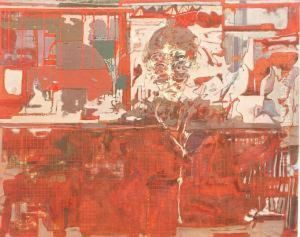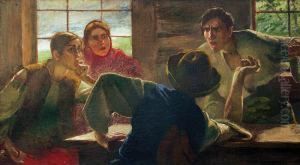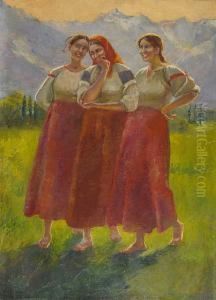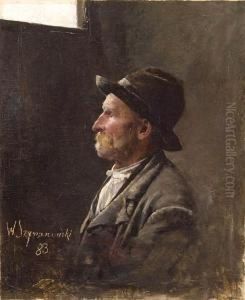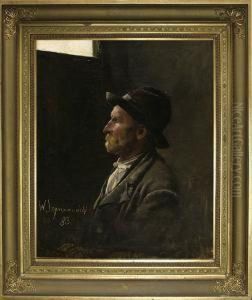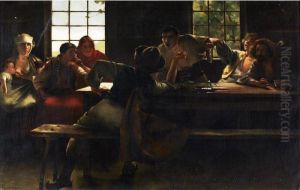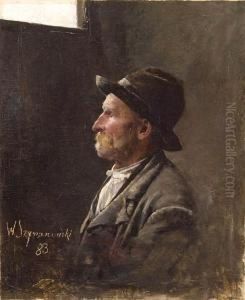Waclaw Szymanovski Paintings
Waclaw Szymanowski was a Polish sculptor and artist, born on July 18, 1859, in Warsaw, Poland, then part of the Russian Empire. His artistic journey began in the late 19th century, a period that saw the flourishing of various art movements across Europe. Szymanowski's work, however, was deeply rooted in the Romantic traditions, with a strong inclination towards symbolism and national themes, echoing the broader cultural and political currents in Poland at the time.
After initial studies in Warsaw, Szymanowski furthered his education abroad, which was a common path for many Polish artists of his era, given the limited opportunities in their partitioned homeland. He studied in Paris at the École des Beaux-Arts and in Rome, which were pivotal experiences that shaped his artistic vision. Paris, in particular, was a hotbed of artistic innovation, and while Szymanowski was exposed to various new trends, including Impressionism and Symbolism, he remained committed to a more traditional, academic style in his own work.
Szymanowski is best known for his monumental sculptures and memorials, which often celebrated Polish national heroes, history, and mythology. Among his most famous works is the Chopin Monument in Warsaw's Royal Baths Park, unveiled in 1926. This grand, expressive sculpture captures the romantic spirit of Frederic Chopin's music and became an iconic symbol of Polish national pride. Unfortunately, the original was destroyed during World War II by the Nazis, but it was meticulously recreated and re-erected in 1958.
Throughout his career, Szymanowski also engaged in smaller scale works, including portraits and decorative art, showcasing his versatility and mastery over different mediums. His style evolved over the years, incorporating elements of Art Nouveau and later, more simplified forms, reflecting the shifts in artistic trends leading up to the early 20th century.
Waclaw Szymanowski's contributions to Polish art were significant, not only for his artistic achievements but also for his role in fostering a sense of national identity through his works. He died on April 13, 1930, in Warsaw, leaving behind a legacy that continues to inspire admiration and respect. His works remain an integral part of Poland's cultural heritage, celebrated in museums and public spaces across the country.
